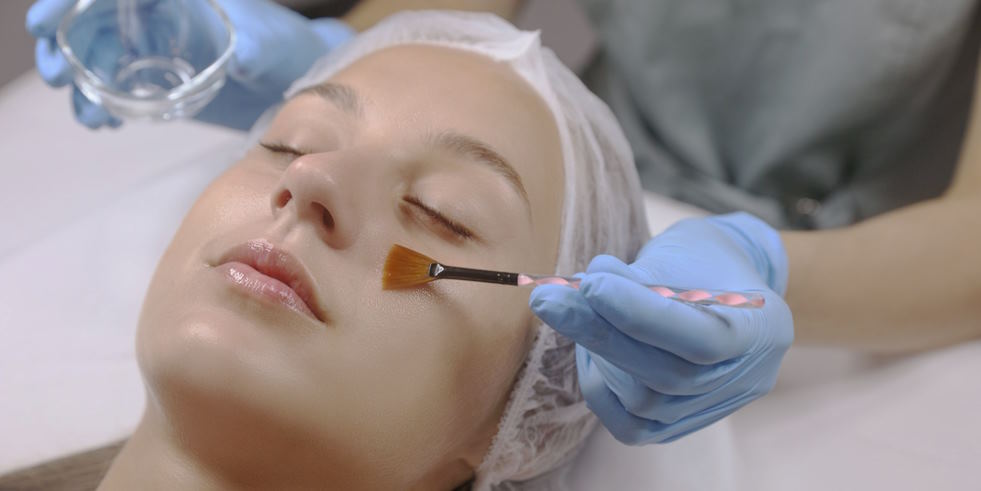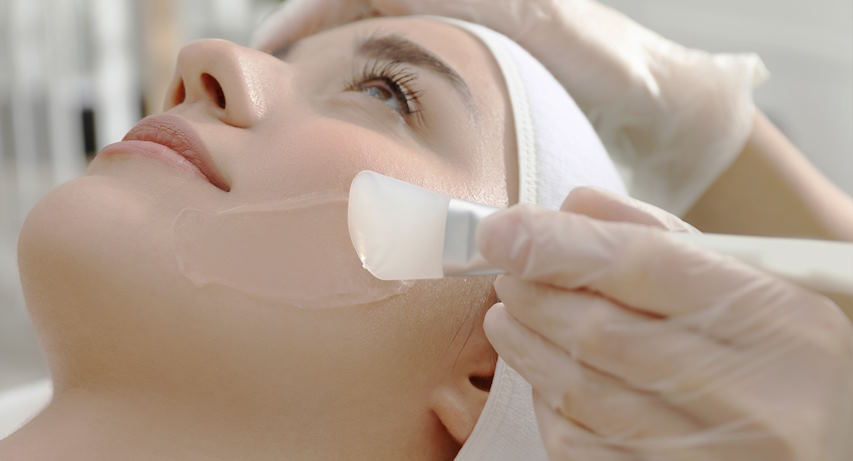October 16, 2023
The Benefits of Chemical Peels for Skin Renewal

In recent years, the beauty industry has witnessed a paradigm shift towards prioritizing skin health and embracing non-invasive procedures. At the forefront of this shift is the growing popularity of chemical peels, a cosmetic treatment that goes beyond mere aesthetics to promote genuine skin renewal. As the quest for flawless skin gains momentum, individuals are turning to these peels not just for their aesthetic appeal but also for their profound impact on skin health.
Benefits of Chemical Peels
Improved Skin Texture and Tone
Chemical peels are renowned for their ability to improve skin texture and tone. By removing dead skin cells and stimulating cell turnover, these peels contribute to a smoother and softer complexion. Fine lines and wrinkles are visibly reduced, leaving the skin looking refreshed and rejuvenated.
Treatment of Acne and Acne Scars
Individuals plagued by persistent acne or unsightly acne scars find solace in chemical peels. The exfoliation process helps unclog pores, reduce inflammation, and fade acne scars over time. Regular sessions can significantly improve the overall appearance of acne-prone skin.
Reduction of Hyperpigmentation and Sun Damage
Hyperpigmentation, often caused by sun exposure or hormonal changes, can be effectively addressed with chemical peels. The exfoliation process targets areas of uneven pigmentation, revealing a more uniform skin tone. Sun damage, including sunspots and freckles, is also mitigated through the peeling process.
Enhanced Absorption of Skincare Products
A significant but often overlooked benefit of chemical peels is their ability to enhance the absorption of skincare products. With the removal of dead skin cells, the skin becomes more receptive to the active ingredients in serums, moisturizers, and other products, maximizing their effectiveness.
Boost in Confidence and Self-Esteem
Beyond the physical transformations, chemical peels can have a profound impact on an individual’s mental well-being. Improvements in skin texture and tone often translate to increased confidence and self-esteem. Feeling comfortable and content with one’s appearance contributes to an overall sense of well-being.

Types of Chemical Peels
Glycolic Acid Peels
Derived from sugarcane, glycolic acid is a popular choice for superficial peels. It is effective in addressing fine lines, mild discoloration, and rough skin texture. Glycolic acid peels are suitable for a wide range of skin types.
Salicylic Acid Peels
Ideal for those with acne-prone or oily skin, salicylic acid peels penetrate deep into the pores, effectively treating acne and preventing future breakouts. They are also beneficial for reducing the appearance of large pores.
TCA (Trichloroacetic Acid) Peels
TCA peels are versatile, ranging from medium to deep penetration. They are effective in addressing more significant skin concerns such as deep wrinkles, hyperpigmentation, and acne scars. TCA peels require careful application and professional supervision.
Combination Peels
Some chemical peels combine different acids to target multiple skin concerns simultaneously. These combination peels offer a comprehensive approach to skin renewal and are often customized based on individual needs.
Professional vs. At-Home Peels
While professional chemical peels administered by skincare professionals provide more controlled and tailored outcomes, there are also at-home peel options available. However, at-home peels typically have lower acid concentrations and may require more frequent application for noticeable results.

Preparing for a Chemical Peel
Consultation with a Skincare Professional
Before undergoing a chemical peel, a consultation with a skincare professional is crucial. This involves a thorough assessment of the skin, discussing the individual’s goals, and determining the most suitable type and depth of the peel.
Pre-Peel Skincare Regimen
Preparing the skin before a chemical peel involves following a specific skincare regimen. This may include avoiding certain products, such as retinoids, and using gentle cleansers and moisturizers to ensure the skin is in optimal condition for the procedure.
Understanding Potential Side Effects and Risks
While chemical peels are generally safe when performed by qualified professionals, it is essential to understand potential side effects. These may include redness, peeling, and temporary sensitivity. Rare complications such as infection or scarring can be minimized with proper pre- and post-care.
Aftercare and Recovery
Post-Peel Skincare Routine
Following a chemical peel, a tailored skincare routine is essential for optimal results and minimal discomfort. This typically involves gentle cleansers, hydrating serums, and high SPF sunscreens to protect the newly revealed skin.
Sun Protection and Avoiding Sun Exposure
Post-peel, the skin is more susceptible to sun damage. Strict sun protection measures, including the regular application of sunscreen and minimizing sun exposure, are critical to maintaining the results and preventing hyperpigmentation.
Managing Potential Side Effects
Some degree of redness, peeling, and sensitivity are common after a chemical peel. These side effects can be managed with gentle skincare products, avoiding harsh chemicals, and staying hydrated. Any persistent or severe side effects should be promptly addressed with a skincare professional.
Follow-Up Appointments and Maintenance
Depending on the type of chemical peel, multiple sessions may be required to achieve the desired results. Follow-up appointments with the skincare professional help monitor progress, make adjustments to the treatment plan if necessary, and discuss long-term maintenance.




